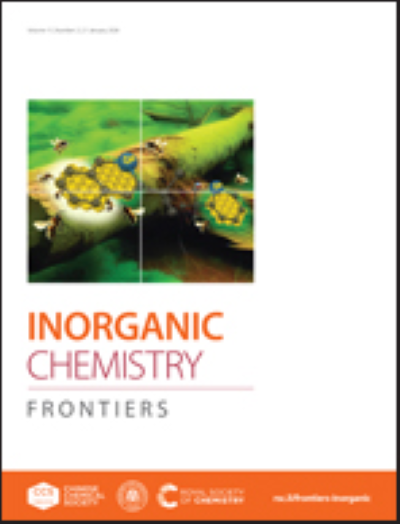Isovalent cation substitution drives structural transformation and infrared nonlinear optical activity in Eu-based chalcogenides
IF 6.1
1区 化学
Q1 CHEMISTRY, INORGANIC & NUCLEAR
引用次数: 0
Abstract
The development of Eu-based chalcogenides with exceptional nonlinear optical (NLO) performance in the infrared (IR) region has garnered increasing attention. However, the design and synthesis of such compounds with non-centrosymmetric (NCS) structures remain a significant challenge. In this study, we report the successful synthesis of a novel quaternary Eu-based chalcogenide, β-EuZnGeS₄, achieved through an isovalent cation substitution strategy starting from the ternary parent compound Eu₂GeS₄. This innovative approach induces a structural transformation from centrosymmetric to non-centrosymmetric, thereby enhancing the NLO properties. β-EuZnGeS₄ crystallizes in the orthorhombic Fdd2 space group, with a unique two-dimensional [ZnGeS₄]²⁻ layer structure that accommodates Eu²⁺ cations. Notably, β-EuZnGeS₄ exhibits a well-balanced set of optical properties, including a remarkable phase-matching second-harmonic generation (SHG) effect, with its maximum SHG value being twice that of AgGaS₂ with a 2050 nm laser. Additionally, it demonstrates a high laser-induced damage threshold, surpassing AgGaS₂ by a factor of 13.1, along with a broad transparency window extending from 0.39 to 23.7 μm. Theoretical calculations further reveal that these outstanding optical properties stem from the synergistic effects of the highly distorted tetrahedral [ZnS₄] and [GeS₄] motifs within the crystal lattice. This work not only expands the material database for rare-earth metal chalcogenides but also provides a novel strategy for designing NCS structures with tailored optical properties for a wide range of applications.求助全文
约1分钟内获得全文
求助全文
来源期刊

Inorganic Chemistry Frontiers
CHEMISTRY, INORGANIC & NUCLEAR-
CiteScore
10.40
自引率
7.10%
发文量
587
审稿时长
1.2 months
期刊介绍:
The international, high quality journal for interdisciplinary research between inorganic chemistry and related subjects
 求助内容:
求助内容: 应助结果提醒方式:
应助结果提醒方式:


